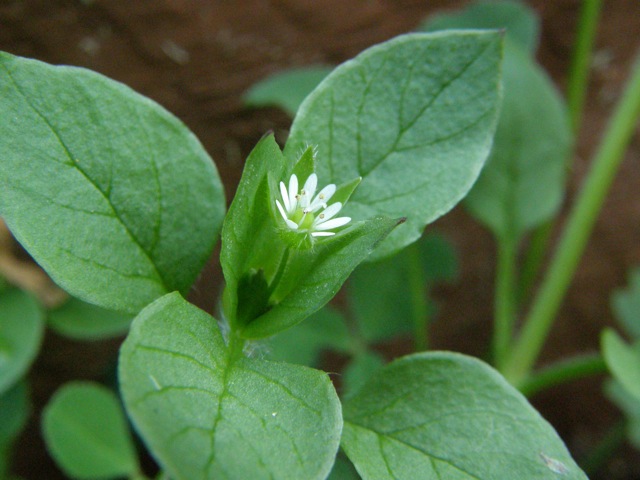Caryophyllaceae, the pink family.
Description:
Plant:
Low, branching-spreading plant, to 16" long, with weak stems, opposite leaves,
and small, starlike, white flowers with deeply notched petals. Annual.
Flowers:
Small, white, about 1/4", with five, deeply notched petals, that might appear to be ten on
casual examination, five stamens, and usually three styles. The petals are
distinctly shorter than the sepals.
Flowers in loose, terminal clusters (cymes), or solitary in leaf axils.
Leaves:
Opposite, 1/4"-1" long, ovate, with smooth margins, usually stalked (petioled), but sometimes
sessile near the top of the plant. Stems and petioles have a line of hairs;
the leaves are mostly hairless.
Fruit:
A dry, ovoid capsule.
Blooming:
Any time the temperature rises above freezing.
I have found it blooming in mid-January.
Habitat:
Meadows, lawns, gardens, and waste places.
Comments:
One of several so-called true chickweeds (genus Stellaria) as contrasted with the
related, but fuzzier mouse-ear chickweeds (genus Cerastium), this species is
a Eurasian import, and a common weed in lawns and gardens.
The common name supposedly refers to chickens eating the seeds.
The leaves and stems are edible in salads or as a potherb.
Where to find it:
Common in lawns and garden areas throughout the park.
